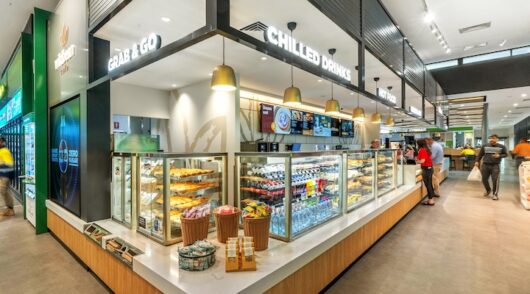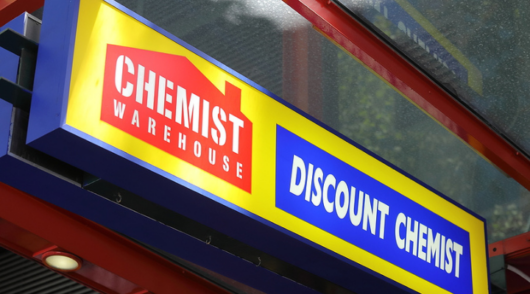Defying sluggish economic conditions and gloom and doom predictions about the future prospects of the retail industry, Melbourne is leading Australia in shopping centre development activity.
While extension projects are at an advanced stage at Highpoint in Melbourne’s western suburbs and Fountain Gate in the south east, work is now well underway on Emporium, the landmark city complex adjoining the Myer and David Jones department stores.
After selling the former Ringwood Market site to Costco for the American retailer’s second Melbourne store, Queensland Investment Corporation (QIC) has started preliminary works on a $500 million multi-use hub anchored by an expansion of the Eastland shopping centre.
When completed, Westfield Fountain Gate will be the second largest shopping centre in Australia by floorspace, with a total gross leasable area of 171,000sqm.
The biggest shopping centre in the country is, of course, Chadstone and it is keen to ensure that it retains that title, with planning approvals sought for a further 27,000sqm of retail floorspace as part of a $500 million mixed use residential, hotel, office and retail development.
Chadstone currently has 190,000sqm of retail floorspace and will expand to 117,000sqm if it obtains planning approvals for the project, which its owners hope to complete by 2015.
Although Melbourne is leading the country in shopping centre development projects, Western Australia is also poised for significant growth based on the strong state economic performance and a relaxation of floorspace caps on shopping centres.
Other states, particularly Queensland and NSW, could also see several retail projects that have been on the drawing board for a number of years started, after Westfield and AMP Capital have reviewed their joint venture partnerships.
Two major centres that may dust off their development plans as a result of the Westfield and AMP Capital portfolio review are Pacific Fair in Queensland and Macquarie Centre in Sydney.
Despite a series of retail chain collapses in the past 18 months that has led to shorter queues of prospective tenants and pressure on rents, owners of regional malls remain bullish about their prospects.
Michael Lloyd, a former director of Lend Lease Retail, claims regional centres have reason to be confident, with the largest shopping centres lifting their share of the retail dollar and maintaining floorspace demand.
Lloyd says Australia’s largest 63 shopping centres have generated sales of more than $30 billion in the past year, with estimated turnover per square metre growth of 15 per cent since 2005 and about 2.5 per cent growth in the past two years.
Sales per square metre in the top 63 shopping centres is currently around $6502, up from $5633 in 2005.

In 2005, according to Lloyd, there were 57 large centres with more than 40,000sqm of retail floorspace in Australia, and by 2011 the number had grown to 75 centres.
Sales per square metre for specialty stores was around $7000 in most of the larger centres, while 30 centres in 2011 posted average turnover levels of more than $10,000.
The top centre for specialty store sales per square metre is Westfield Sydney at $15,150; followed by Westfield Chermside in Queensland at $13,692; Garden City Booragoon WA, $13,345; Chadstone Victoria, $13,202sqm; Caneland Central QLD, $12,647; and Westfield Bondi Junction NSW, $12,442.
“What we are seeing are the effects of the big centres’ recent expansion, innovation, or refurbishment, coupled with expertise in leasing, marketing, and management, now boosting the larger operators’ turnover, which should continue as the new 2013 financial year unfolds, despite ongoing reports of the gloomy retail conditions,” said Lloyd.
“These centres are highly flexible. They have the ability to react very quickly to changing market demands and new retail concepts.
“This expertise and flexibility enables them to be at the forefront of new retail directions, whereas the competition outside major centres acts disjointedly with multiple retail property owners on the same strip having different objectives and strategies which usually come down to little more than constant rent increases.
“Even the regional and sub-regional shopping centres are improving their position, while many shops on the main strips continue to struggle under the weight of their landlords’ unrealistic lease agreements and high rentals,”he said.
Retrospective
Back in 2005, Knox City shopping centre in Melbourne’s eastern suburbs was Australia’s largest shopping centre with 142,244sqm of retail space.
Knox City is ranked third in 2012, effectively swapping places with Chadstone, which had 137,076sqm of retail floorspace seven years ago before major redevelopment and expansion boosted its gross leasable area to 190,000sqm.
Westfield Fountain Gate was the second largest retail centre in Australia in 2005 with 138,163sqm, and it will regain that second position when it completes its $320 million redevelopment later this year or early in 2013.
Fountain Gate will add 114 new stores, including a full line Myer department store, for a total of 444 shops and 171,000sqm of retail floorspace.


Fountain Gate should retain the second spot for a few years, with the only threat likely to be QIC’s stalled Castle Towers redevelopment in Sydney.
While places in the Top 10 centres measured by retail floorspace have changed since 2005, only two centres have dropped out of the 10 completely – Highpoint in Victoria, which was ranked nine at 123,200sqm seven years ago, and Westfield Carindale Queensland, ranked 10 with 113,268sqm.
But they are both about to make a return to the Top 10, with redevelopment projects well underway.
Highpoint and Westfield Carindale were replaced in the top 10 by Westfield Chermside, ranked at 31 in 2005 with retail floorspace of just 77,715sqm, but now ranked second with 144,351sqm, and fellow Queenslander, Robina Town Centre.
Robina Town Centre was ranked 21 in 2005 on a floorspace measure with 85,500sqm but, Robina Town Centre will drop from the top 10 when the $300 million redevelopment of Westfield Carindale is completed later this year, increasing that centre’s retail floorspace from the current 114,930sqm to 137,000sqm.
Highpoint will edge Warringah Mall in Sydney from the Top 10 if a proposed 8000sqm extension is not completed. If Warringah Mall is extended, Westfield Bondi Junction will fall out of the Top 10 rankings.
The Highpoint extension, including a David Jones department store and 100 more specialty shops, will lift the centre’s gross leasable area from a current 123,000sqm to 156,000sqm.
GPT Group’s $300 million redevelopment of Highpoint will make the centre Australia’s third largest in terms of retail floorspace behind Chadstone and Westfield Fountain Gate when it is completed.

The redevelopment projects, also including the rollouts of Costco warehouse stores, Masters Home Improvement, and Bunnings Warehouse stores, indicate confidence in retailing, albeit there is a shift away from traditional retail formats to newer concepts.
Lloyd argues that the major shopping centres are “very definitely holding their own,” and meeting the challenges of the lingering effects of the global financial crisis, subdued consumer confidence and spending, the strength of the dollar and the online challenge.
But he claims department stores have lost the plot and they may well be part of a reconfiguration of shopping centre formats.
“The department stores are still living in the past and they seem to be oblivious of the changing demands of the consumer.
“Service levels are atrocious, product display is amateurish and anachronistic and all they seem to be focussing on is cutting costs. If they do not change dramatically, in a very short time as a retail yardstick, they will be irrelevant.”
It is interesting to note that Myer and David Jones expansion plans in the past three years have been a key driver in shopping centre extensions and redevelopments, but several projects have been shelved or had timelines pushed out.
Development drivers
Another driver of retail development, especially in major shopping centres in CBD and prime regional centres has been the entry or planned entry into the Australian market of a number of international retailers, including Topshop, Zara, Uniqlo, Abercrombie & Fitch, Gap, H&M, River Island, Banana Republic, and Forever 21.
Most of the international retailers are looking for large footprint flagship stores rather than developing chains.
The destination stores strategy of the international retailers is helping to differentiate CBD and prime shopping centres retail offers from other suburban regional centres and has been a key factor in the leasing program for Emporium in Melbourne, as well as Chadstone’s current planning application for a further 25,000sqm of retail floorspace.
Emporium, due to open by Christmas 2013, will have around 240 tenancies in 46,000sqm of retail floorspace over five levels and has planned large footprints for international retailers.
Developed by Colonial First State Global Asset Management in partnership with Singapore sovereign wealth fund GIC, the Emporium will occupy the former Myer Lonsdale St store site between Lonsdale and Little Bourke streets.
The development retains the historic Myer façade on Londsdale St and will have connections to the landmark Myer Bourke St and refurbished David Jones stores that opened last year and the upgraded Melbourne Central complex.
The Buchan Group, architects for the $1.2 billion Emporium complex, have created a design to blend the heritage façade with a contemporary glazed, multilevel façade which has been called the ‘’jewellery box’.
The Buchan Group is also working with the Japanese interior design firm, Wonderwall, on the internal spaces which will include a racetrack mall, glass elevators, three levels of food, and clear glass bridges into levels one to four of both Myer and David Jones.
The architects are creating an active street frontage with a mix of both international and high profile national brands.

Colonial First State expects the centre’s distinctive design, connections to the two major department store brands, and its ability to provide footprints of a size and configuration not available in other prime city areas will be a lure for luxury retailers and international brands seeking showcase stores.
The company said leasing is ahead of schedule and expectations and, while not divulging name tenants, Emporium has signed up retailers who are “new to country” and retailers with new concepts.
Topshop is understood to be in discussions for a tenancy at Emporium, slightly bigger than its Chapel St store at around 2500sqm.
Emporium is a key development that will provide stronger links between Melbourne’s CBD retail stores and centres, including the department stores, Melbourne Central, QV, Bourke St Mall and its connections to Collins St and Melbourne GPO.
Keen to ensure it maintains its share of the upmarket retail fashion dollar, Melbourne GPO is also undergoing a refurbishment that is sensitive to the historic former post office building while creating a contemporary retail space.
ISPT, the property investment fund that acquired the lease to the building from Australia Post in 2005, is overseeing an $8 million upgrade and a tenancy remix that will enable the complex to secure its positioning as an upmarket fashion destination.
Melbourne GPO is a designer showcase with retailers such as Lisa Ho, Zimmerman, Karen Millen, Arthur Galan AG, Georg Jensen, Leona Edmiston, Fat, Kenzan and Ben Sherman.
This feature first appeared in the August/September 2012 edition of Inside Retail Magazine. For more stories like this, subscribe to Inside Retail Magazine’s bi-monthly print edition here.






